Requirements for the ventilation of a gas boiler: standards and features of the system assembly
Agree that it will be a shame to spend money on equipping the boiler room, and then get a refusal from the gas service due to an improperly designed hood. But if you comply with the ventilation requirements of the gas boiler, this can be avoided.
The article proposed by us presents the main legislative and construction standards, based on which you can establish the right ventilation system in a private house.
The content of the article:
The regulatory framework of the Russian Federation
Installation of ventilation systems is required regardless of the type of heating equipment used (Clause 9.38 of the SNB 4.03.01-98). Installation of heating and ventilation equipment is carried out under the supervision of representatives of gas services.
If during start-up tests defects of the ventilation system and technical inconsistencies of the design documentation are revealed, commissioning of the heating system will be refused.
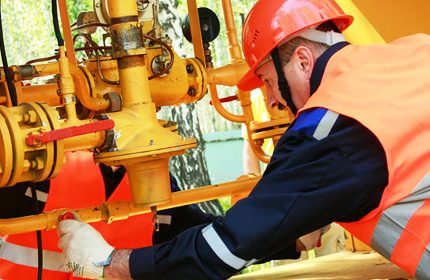
Ventilation provides a constant intense flow of fresh air. The functioning of exhaust systems is regulated by a number of regulatory acts.
Legislation and GOST
The legal framework regarding the ventilation and conditioning of gas equipment is quite extensive. These legal acts include:
- Federal Law No. 384;
- Government Decision No. 1521 on ensuring, on a mandatory basis, compliance with 384-FZ;
- Government Decision No. 87;
- Government Decision No. 410 on security measures for the maintenance of gas equipment;
- SNiP (II-35-76, 2.04-05);
- SanPiN 2.2.4.548-96. 2.2.4;
- ABOK standards and recommendations in the field of ventilation, etc.
But legislative acts can change, therefore, with installation of ventilation equipment for the arrangement of a gas boiler house, one should keep track of their latest editions in official sources.
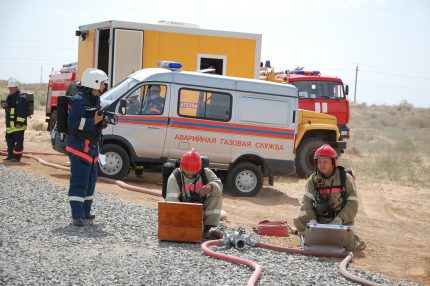
Also, all ventilated systems in rooms with boiler equipment must comply with the following GOSTs and SP:
- GOST 30434-96;
- GOST 30528-97;
- GOST R EN 12238-2012;
- GOST R EN 13779-2007 on conditioning and ventilation in non-residential buildings;
- GOST 30494-2011 on the microclimate in residential and public buildings;
- SP 7.13130.2013 on requirements for ensuring fire safety;
- GOST 32548-2013 (interstate standard);
- SP 60.13330.2012 (applies to SNiP 41-01-2003), etc.
Based on these regulations, design documentation should be compiled. So that it does not contradict official requirements and standards, it is necessary at the stage of project development to conduct thermal calculations and calculate the main parameters of the exhaust system.
Certification of ventilation equipment
When buying a device for extracting and supplying fresh air, check their documents. For ventilation equipment sold on the territory of the Russian Federation, a declaration of conformity is mandatory.
This document confirms that the devices comply with all relevant requirements of the Customs Union set forth in the following technical regulations:
- TR TS 004/2011 on the applied low-voltage equipment and the safety of its operation;
- TR TS 020/2011 on electromagnetic compatibility of the equipment used;
- TR TS 010/2012 on the safety of machinery and equipment.
This product declaration is mandatory, but in addition to it, the manufacturer or importer of ventilation equipment can go through the official procedure for voluntary certification for compliance with GOST standards. The presence of such a certificate, obtained on a voluntary basis, indicates the high quality of products and the reliability of the manufacturer.
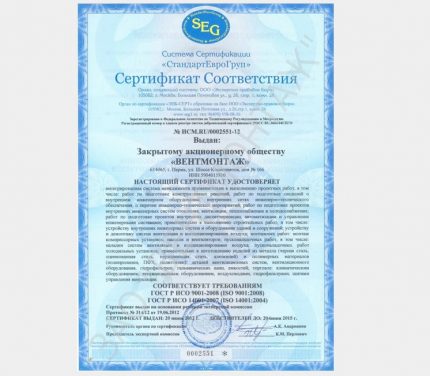
But voluntary certification requires additional investment, so it is often saved. In accordance with Federal Law No. 313 and Government Decisions No. 982 and No. 148, the mandatory certification of ventilation equipment has been abolished.
Basic ventilation requirements
Installation of properly calculated and well-designed ventilation is an important condition for the boiler room to work. Usually, all the necessary parameters to ensure the normal operation of the gas heating equipment are indicated in its technical passport.
Why is normal air exchange important for the boiler room?
The lack of a normal flow of fresh air negatively affects the performance of gas equipment. The process of burning fuel is impossible without intensive and continuous supply of oxygen.
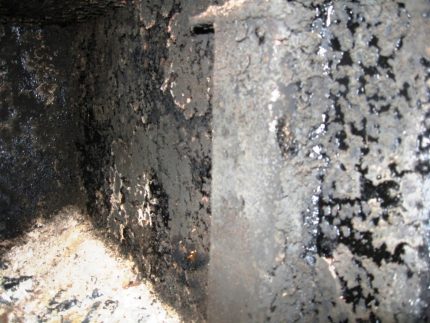
Due to poorly functioning ventilation, fuel burns worse, heat generation decreases, and gas consumption is increased. That is why when designing a gas boiler house of a country house and exhaust equipment it is important to adhere to established standards and state standards.
If the ventilation system is built with violations and cannot provide stable air exchange in the required volume, in case of an accidental emission of carbon monoxide, carbon dioxide will quickly spread to residential premises.
Requirements for the flow of air into the furnace
On the basis of SP 41-104-2000 (clause 13.4), the air inflow into the boiler room with a gas boiler should be three times. Those. the air in the room in 1 hour should change 3 times.
Otherwise, the hood will only provide the boiler, but the combustion products will begin to accumulate in the room: in the air, on the walls, on the ceiling, etc. Also, a three-time supply of air is necessary for emergency removal of gas (in case of leakage) and combustion products when they enter the living room.
Checking three-time air exchange and matching the cross section of the ventilation pipe design area of air ducts generally accepted standards are carried out by specialists in ventilation units. For this, the flow rate and air velocity measured using an anemometer are taken into account.
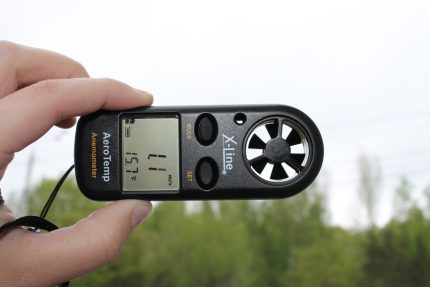
But now JV 281 has also been introduced. Based on its clause 14.3, for equipment with a capacity of 50 kW or more, a single inflow of air into the furnace room in private houses is permissible. Similar requirements are introduced for more powerful equipment (from 360 kW).
They are regulated by clause 17.11 of SP 89. This document states that the air flow should not be less than once per hour, although the exact calculated air exchange is determined on the basis of real measurements. Before installing ventilation in a boiler room with a gas boiler, it is recommended to clarify the requirements for the frequency of air flow from the gas service in a particular region.
General requirements for boiler rooms
Furnace and boiler rooms can be organized in rooms with a ceiling height of 2 m or more. Domestic premises with open-type gas equipment must have at least one window with an area of 0.25 m or more.2. In furnaces with gas-heating equipment with a sealed combustion chamber, this window may be absent (Clause 9.37 of the SNB 4.03.01-98).
When choosing a place to place gas devices, you need to look at their power. The minimum allowable furnace volume depends on power (data are indicated in the table below).
| Thermal power of the equipment (kW) | Permissible room cubic capacity (m3) |
| Up to 30 | 7,5 |
| 30-60 | 13,5 |
| 60-200 | 15 |
All basic requirements for exhaust systems are reflected in SNiP (II-35-76, 2.04-05). These requirements include:
- the presence of a separate airway in the ventilation system;
- tightness of ventilation ducts (moreover, all joints must be treated with sealants that are able to maintain their insulating properties at high temperature values);
- air channel design in the boiler room ceiling;
- the presence of sleeves in the wall to accommodate the chimney of the gas boiler itself and to carry out its maintenance;
- placement of the cleaning channel 25-35 cm below the other;
- use only fire-resistant and non-combustible materials for finishing the floor and walls in the room (for this you can take fireproof boards with a fire resistance of ¾ hour).
According to the regulations, no more than two gas appliances can be connected to the chimney. If combustible materials are used at the outlet of the pipes, they must be properly insulated. Between the outer wall and the end of the chimney there must be a distance of more than 30 cm.
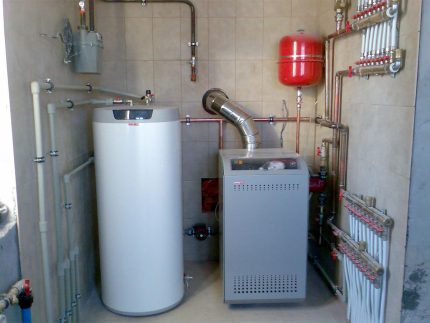
The pipe should be above the surface of the floor inside the building at a height of at least 25-50 cm, but you need to look at the height of the snow cover in the design area of the boiler room. For this, SNiP 41-01-2003 can be applied.
Paragraph 7.3.2 says that the bottom of the opening for the receiving pipe on the outside of the building should be placed at a height of more than 1 m from the level of stable snow cover characteristic of this region according to hydrometeorological stations.
Clean air can enter the boiler room from the street and from another room through the ventilation grill of the door or through the gap between the floor and doors with a live section of 0.02 m2 (Clause 9.38 of the SNB 4.03.01-98).
If the cross-sectional area of the grill is extremely small, it will be necessary to install supply fans to normalize the air exchange of the room.
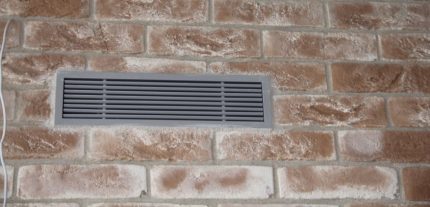
Air can be supplied both externally and internally. But at the same time, a living room cannot act as an adjacent room.
It is better to make two air ducts that go separately to the street: a hole in the ceiling in the ceiling with a diffuser and a grille for inflow to the floor. The supply grille is installed at the bottom of the wall or door and usually has inclined adjustable shutters, due to which rain and snow do not get into the room.
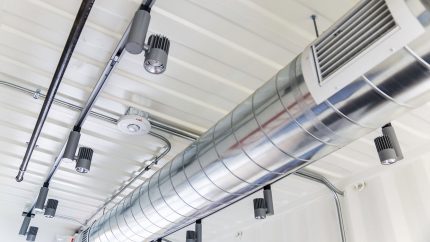
This requirement is partially reflected in clause 8.4.2 of SP 31-1-06-2002. The document refers to the premises of the heat generator, but its technical characteristics are similar to a gas boiler, so you should pay attention to this standard. It indicates that for equipment with a capacity of 30 kW or more air should be supplied only from the outside.
Ducts discharged into the house are dangerous: in the event of a gas leak, harmful substances can enter residential premises, although such a ventilation scheme is permitted by the regulations. But in that, and in another case, the volume of incoming air should be equal to the volume of outgoing air. This condition is necessary for the prevention of pressure drops.
However, in some cases, the organization of air exchange with the predominance of clean air in the general balance is allowed. This is characteristic of design of ventilation in boiler rooms and furnace, adjacent to residential premises. At the same time, a negative balance needs to be created in the gas boiler to prevent the penetration of carbon dioxide into other rooms.
Varieties of ventilation systems
Ventilation for rooms with gas heating equipment, as well as for other objects, can be of two types: natural and forced. The natural device and the installation of forced ventilation is permitted and regulated by applicable regulations.
Natural ventilation of boiler rooms
Natural ventilation provides ventilation of the room with the help of pipes of different sizes and pre-made holes in the walls, ceiling or on the floor. In fact, natural ventilation works thanks to pressure differences.
It allows the construction of vertical and horizontal elbows. In accordance with the requirements of SNiPs, the system can have horizontal sections up to 8 m long, but it is better to make them no more than 2 m long. At the same time, no more than three can be designed.
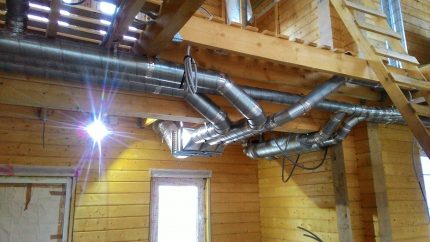
Most often, exhaust openings are located above the boiler. Natural ventilation does not include the use of special discharge and exhaust equipment.
Calculation of air exchange for natural ventilation in a boiler room with a gas boiler is quite simple: you need to add 5 degrees for the outside temperature and 18 degrees for the inside.Checking the operation of ventilation is subject to the presence of the indicated temperature difference.
When accepting a natural exhaust system, calculations are made to determine whether it will work in the summer. If not, then you will have to design forced ventilation, because according to standards, the hood should function year-round.
Forced ventilation system
Forced (artificial) ventilation is a whole automated system with an exhaust duct and the installation of fans and air conditioners.
The power of this engineering structure can be adjusted using programs or mechanisms (depending on the characteristics of the equipment). Moreover, it is better to design an automatic control system that will start when the boiler is turned on and turn off when the fuel burns out completely.
However, it is completely dependent on power supply. When installing an artificial hood, it is recommended to install an additional generator. If there is such an opportunity, it is better to use a combined exhaust system in which automated devices are started only when natural ventilation can not cope with air exchange.
Diameter of a flow opening in ventilation systems
By standards, natural and artificial ventilation are distinguished by the diameter of the vent (otherwise referred to as the air inlet) to ensure normal draft and regulatory air speed in ventilation ducts. Although the diameter can also be calculated based on the cubic capacity of the room.
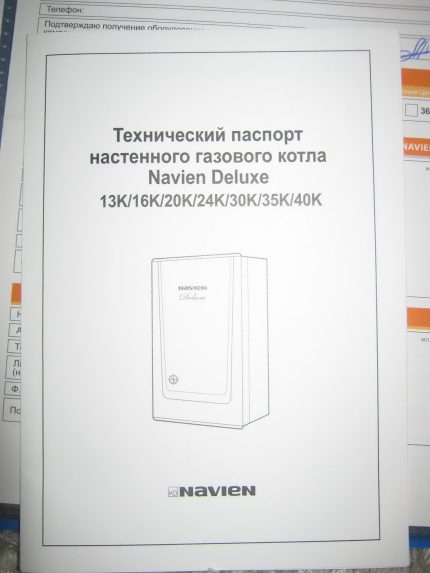
For natural ventilation, the value should be: 30 cm2 cross-sectional area of the supply air per 1 kW gas boiler power. For forced ventilation of a gas boiler according to the norms, the cross-sectional area may be less - 8 cm2.
Duct materials in gas boiler rooms
Correctly selected material for the duct ensures a longer operation of ventilation.
In accordance with current standards, the following materials can be used as a material for organizing ventilation of rooms with gas equipment:
- brick;
- ceramics;
- asbestos;
- galvanized and stainless steel.
It is undesirable to use plastic for air ducts, as this reduces the fire resistance of structures. Some regulatory acts (for example, clause 7.11 of SNiP 41-01-2003) indicate that air ducts may be partially made of combustible materials.
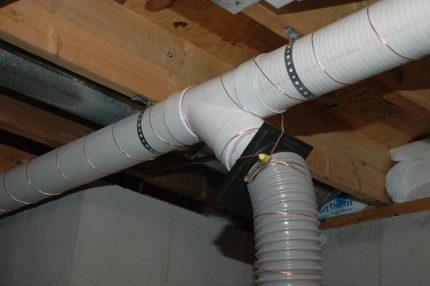
Regardless of which material is used, all ventilation ductspassing through cold zones need to be warmed. In these places, draft may decrease, condensation may form, and the ventilation duct of the boiler room with a gas boiler may freeze and cease to fulfill its functions. That is why it is better to stretch the pipes along the warm contour, eliminating the possibility of their freezing.
Brick exhaust ducts
The brick is short-lived, as Due to temperature changes, condensation forms on its surface, leading to the destruction of the material. If the brickwork is taken as a material for the mine, then the chimney is assembled from single-circuit galvanized metal pipes, the thickness of which depends on the temperature of the gases emitted.
Ceramic Ventilation Pipes
Ceramic ducts are versatile, easy to use and durable. The principle of their assembly is similar to device technology. ceramic chimneys. Due to the high gas density, they are resistant to severe pollution of various types and aggressive chemical environments.
But in such hoods, it is necessary to install steam traps, because ceramics absorb moisture well. Structurally, such a hood consists of 3 layers:
- ceramic inner layer;
- middle insulating layer of stone and mineral wool;
- outer expanded clay concrete shell.
This ventilation system cannot have more than three elbows. At the bottom of the ceramic chimney, a dropper and a revision are installed.
Steel airways
Steel exhaust ducts are convenient and practical.
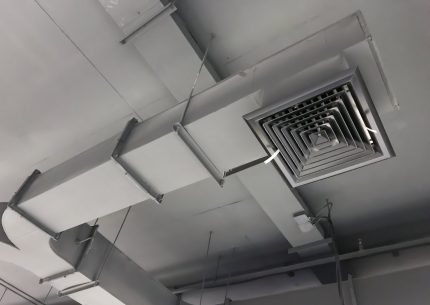
When installing a steel ventilation system, you must adhere to the following recommendations:
- Segment collection is carried out using the pipe-to-pipe method.
- Wall brackets are fastened in increments of no more than 150 cm.
- The length of the horizontal segments should be no more than 2 m, unless forced draft is provided in the system.
According to standards, the thickness of steel walls should be at least 0.5-0.6 mm. The temperature of the gas produced by the boilers is 400-450 0C, due to which thin-walled metal pipes can quickly burn out.
Conclusions and useful video on the topic
The video will introduce the basic requirements of gas services to the ventilation equipment of boiler houses in the Russian Federation:
The installation of exhaust equipment requires precision. But you need to understand that each gas service is characterized by its own interpretation of norms, standards and laws.
Before installing the heating equipment of a private house and the ventilation system in a gas boiler, it is better to consult the gas service in which you will have to obtain permission for commissioning.
Tell us about your own experience gained during the construction of a gas boiler. Share the technological nuances that helped you with a faultlessly functioning air exchange system. Please leave comments in the block form below, post a photo on the topic of the article, ask questions.

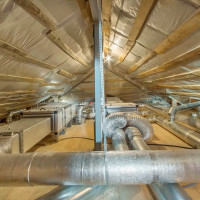 Private house ventilation standards: device requirements and calculation examples
Private house ventilation standards: device requirements and calculation examples 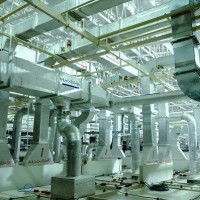 Requirements for ventilation of public buildings: subtleties of arrangement and design of ventilation
Requirements for ventilation of public buildings: subtleties of arrangement and design of ventilation 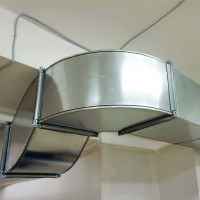 Duct mounting distance standards: calculation of the geometric data of the ventilation route
Duct mounting distance standards: calculation of the geometric data of the ventilation route 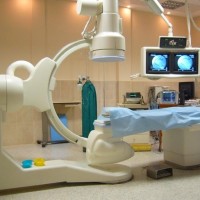 Ventilation and air conditioning for medical institutions: rules and features of the arrangement of ventilation
Ventilation and air conditioning for medical institutions: rules and features of the arrangement of ventilation  Requirements for air humidity in the catering unit: norms and rules for arranging ventilation in the catering unit
Requirements for air humidity in the catering unit: norms and rules for arranging ventilation in the catering unit 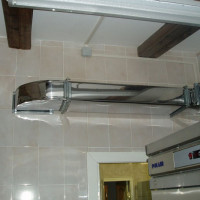 Moving ventilation in the kitchen: regulatory requirements for venting
Moving ventilation in the kitchen: regulatory requirements for venting  How much does it cost to connect gas to a private house: the price of organizing gas supply
How much does it cost to connect gas to a private house: the price of organizing gas supply  The best washing machines with dryer: model rating and customer tips
The best washing machines with dryer: model rating and customer tips  What is the color temperature of light and the nuances of choosing the temperature of the lamps to suit your needs
What is the color temperature of light and the nuances of choosing the temperature of the lamps to suit your needs  Replacement of a geyser in an apartment: replacement paperwork + basic norms and requirements
Replacement of a geyser in an apartment: replacement paperwork + basic norms and requirements
If I want to upgrade existing ventilation, do I need to get permissions?
It depends on what exactly you mean by the word modernization. It may be that you do not have to get any permissions, but this is with minimal changes in the ventilation system of the gas boiler, which do not affect the technical characteristics. I also want to note that all work must be carried out by qualified specialists, be it modernization or repair work.
I would also like to clarify what kind of boiler room in question: a private house or an organization? For the latter option, you just won’t learn to make changes to the ventilation system. You must have agreed acts on the implementation of the relevant work. Any changes that will be made must comply with GOST and JV - this is a prerequisite! If there are any violations, then this is fraught not only with fines, but also with incorrect operation of the ventilation system itself.